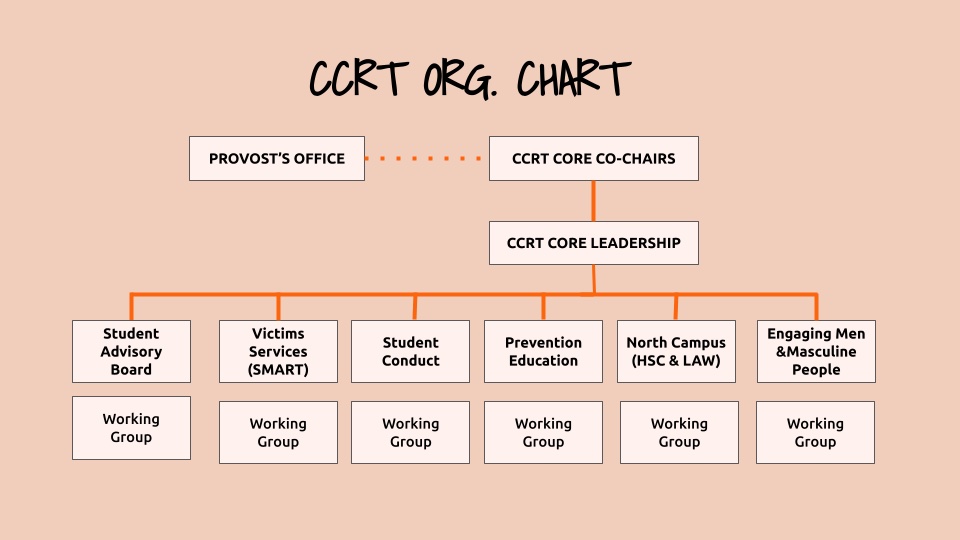CCRT Working Groups
The CCRT Model is a form of community work that is deeply influenced by grassroots, social justice framework of power-building by decentralizing authority from one individual or office to a shared, diverse community. Some of us came to the CCRT because our professional work directly intersects with the purview of the grant, others were drawn in because of a deep intrinsic desire to engage in the work, without our regular job duties necessarily having a connection to the field. This model of power-sharing and of including those who may not be traditionally brought to the table requires us to reframe how we understand our own roles within the CCRT.
While we may be “experts” in a given field related (or unrelated) to gender-based violence, it is more helpful (and accurate) to think of ourselves as facilitators, the connective tissues that holds cross-campus, cross-departmental conversations around needs and best practices. This means that no one voice holds more weight than the other, and Co-Chairs are not the gatekeepers of decision-making, but rather the liaisons between the larger groups that they oversee (and the needs/suggestions those groups make), and CCRT leadership.
Mirroring the way that we built our strategic plan—with the Project Coordinator facilitating and organizing ideas, best practices and concerns brought to her by the CCRT Core & Working Group Co-Chairs—Co-Chairs will be responsible for reflecting and communicating the needs and concerns of the larger groups that they manage, relying on a collective knowledge and shared decision-making model. In doing this, the CCRT will do the important work of continuing to push back against departmental silos, hopefully encouraging true community building across campus.

